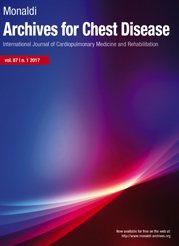The role of counseling in maintaining blood sugar control in patients with pulmonary tuberculosis and diabetes mellitus
All claims expressed in this article are solely those of the authors and do not necessarily represent those of their affiliated organizations, or those of the publisher, the editors and the reviewers. Any product that may be evaluated in this article or claim that may be made by its manufacturer is not guaranteed or endorsed by the publisher.
Authors
Diabetes mellitus (DM) has emerged as an important comorbidity associated with tuberculosis (TB). Both diseases are known to affect each other’s course. There has not been much data on the impact of frequent blood sugar monitoring and counseling in patients with TB and DM. A study was therefore conducted to assess the effects of these measures on glycemic control, radiological improvement, and treatment outcomes. A total of 50 sputum-positive pulmonary TB and DM patients were enrolled and divided into 2 groups (A and B) of 25 patients each. Blood sugar monitoring in both groups was done at the initiation of treatment, at the end of the intensive phase (IP), and at the end of the continuation phase (CP), and they were counseled for glycemic control. Additionally, group A patients were counseled weekly in the IP and biweekly in the CP for glycemic control. Group B patients were provided with glucometers and told to record blood sugars weekly during the IP and biweekly in the CP. The radiological improvement was measured using the TIMIKA score, and treatment outcome was assigned based on end CP sputum conversion. The mean age of groups A and B was 52.96±11.06 years and 51.6±13.05 years, respectively. The differences between the mean fasting blood sugar (FBS) and TIMIKA scores of the two groups at treatment initiation, end IP, and end CP were statistically non-significant (p=0.986, 0.70, and 0.650, and p=0.190, 0.156, and 0.214, respectively). When the two groups were compared for changes in mean FBS status and TIMIKA score from start to end IP, end IP to end CP, and start to end CP, the changes were again statistically non-significant (p=0.171, p=0.076, p=0.541, and p=0.892, p=0.691, p=0.461, respectively). The final treatment outcomes of the two groups were also similar (p=1.000) Counseling of patients with TB and DM was found to be similar to frequent blood glucose monitoring, as no statistically significant differences in the two groups concerning improvement in blood sugar levels, radiological changes, and treatment outcomes were found. It is hence proposed that dedicated counseling sessions are effective and should be a part of routine care in TB patients with DM.
Ethics Approval
The study was approved by the institute’s Ethics committee [letter no. 9(310)2022/38577 dated 13/12/22].How to Cite

This work is licensed under a Creative Commons Attribution-NonCommercial 4.0 International License.






